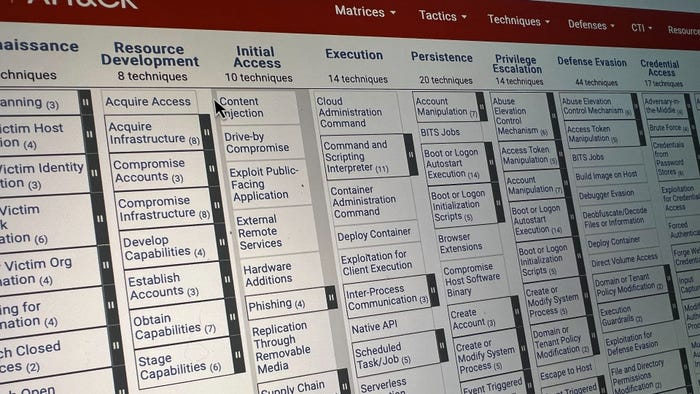Boredom Is the Silent Killer in Your IT SystemsBoredom Is the Silent Killer in Your IT Systems
An environment that values creativity, continuous learning, and calculated risk-taking can prevent boredom while building a resilient, adaptable team ready to tackle whatever challenges come their way.
_ronstik_Alamy.jpg?width=1280&auto=webp&quality=95&format=jpg&disable=upscale)
COMMENTARY
We're so fixated on external threats that we usually fail to look within. Boredom in IT teams often led by technical debt is a real problem, and it's costing companies more than they realize. Cyber threats are evolving, and our approach to combating these threats needs to evolve alongside it. Security is now a problem we need to tackle at all levels, but essentially, it requires a team of reactive developers that can tackle these threats at the start of the development life cycle. The engagement level of your IT team should really be a security concern.
The Ripple Effect of Boredom
Think about the last time you were genuinely excited about a project. It's likely it involved building innovative solutions or solving complex problems. That's no coincidence. The best software engineers thrive on creativity, continuous learning, and curiosity.
When IT teams get stuck maintaining legacy systems or performing repetitive tasks, that fuel starts to run dry. The result is a team that's not just bored but actively falling behind in an industry that never stops moving forward.
How do you spot boredom? I've seen it plenty of times in my own career. Typical warning signs include:
Technical debt accumulates: Small issues can easily compound into major headaches and, if not solved immediately, create tedious work in the future. As one of our clients experienced, what began as a "we'll fix it later" API workaround ended up costing months of refactoring when they needed to scale.
Innovation stagnates: Boredom kills creativity. Consider how a simple idea like containerization revolutionized deployment practices. These innovations don't come from teams going through the motions, they emerge when curious minds are given room to explore.
Skills atrophy: The tech world moves fast. If your team isn't learning, they're falling behind. I've seen teams struggling with cloud migrations because their skills were anchored in on-premises solutions. The cost isn't solely in retraining but in the missed opportunities and the inability to leverage new technologies effectively.
Talent exodus: The best engineers won't stick around if they're not challenged. Expect increased turnover.
Security vulnerabilities increase: Engaged teams are your first line of defense against cyber threats. When developers are invested in their work, they're more likely to spot potential security issues early. Bored teams, on the other hand, might miss critical vulnerabilities hidden in seemingly routine code.
Product quality suffers: Passionate developers think about edge cases, user experience, and long-term maintainability. When motivation is eroded, so is attention to detail. This could manifest as buggy releases, poor user experiences, or systems that become increasingly difficult to maintain over time.
How to Keep Things Interesting
Even cutting-edge teams can fall into ruts if they're not careful. The key factor isn't necessarily the age of the technology, but the approach to working with it. Are you just keeping the lights on, or are you constantly looking for ways to improve and evolve your systems?
So, how do we fix this? Installing ping-pong tables or providing free snacks isn't quite what you should be after. The first priority is creating an environment where creativity and innovation can thrive, and where security is more than a boring checklist.
Here are some concrete steps to take to wake up and engage your IT team:
Allow space for creativity and exploration: Set aside dedicated time for your team to exercise their creativity and curiosity. For example, implement a "10% time" policy where developers can work on self-directed projects one afternoon a week. This could lead to innovations like a new internal tool that streamlines your deployment process, or a creative solution to a long-standing bug.
Modernize and automate the boring stuff: Actively look for opportunities to introduce new tech — and do that by listening to the devs themselves and what tech they want to work with daily. Aggressively reduce false positives and noise in your workflows. Implement tools that automate repetitive tasks and filter out low-impact alerts. This frees up your team to focus on challenging, high-value problems.
Give developers ownership of security: Instead of treating security as a separate, boring checklist, integrate it into the development process. Make security accessible to developers by giving them the tools and knowledge to "shift left" — addressing security early in the development cycle. This turns security from a chore into an engaging part of the creative process.
Implement a "get back to building" mindset: Focus on letting developers do what they love — building. Structure workflows to minimize interruptions and context-switching. For example, set up "no-meeting Wednesdays" or four-hour blocks of uninterrupted development time. This allows for deep work and the satisfaction of seeing projects progress.
Encourage continuous learning with practical applications: Provide context-rich, actionable information in your training efforts. Instead of generic training sessions, tie learning directly to ongoing projects. For instance, when introducing a new security tool, frame it as a workshop where the team applies it to a current development challenge.
Simplify and streamline processes: Look for ways to simplify your development and security processes. Could your code review process be streamlined? Is your deployment pipeline overly complex? Engage your team in finding elegant solutions to these challenges. The process of simplification itself can be a motivating and creative exercise.
Implement "security as code": Treat security configurations and policies as code. This not only improves consistency and version control but also makes security work feel more like a core development task rather than an external obligation.
The goal isn't to implement every new idea or chase every trend. It's about creating a culture where ideas flow freely, challenges are framed as learning opportunities, and your team feels encouraged to be creative. If you create an environment that values creativity, continuous learning, and calculated risk-taking, you can not only fight boredom, you can also build a resilient, adaptable team ready to tackle whatever challenges come their way.
Take a look at your team. Are they just going through the motions, or are they genuinely engaged? If it's the former, it's time to shake things up.
About the Author
You May Also Like




